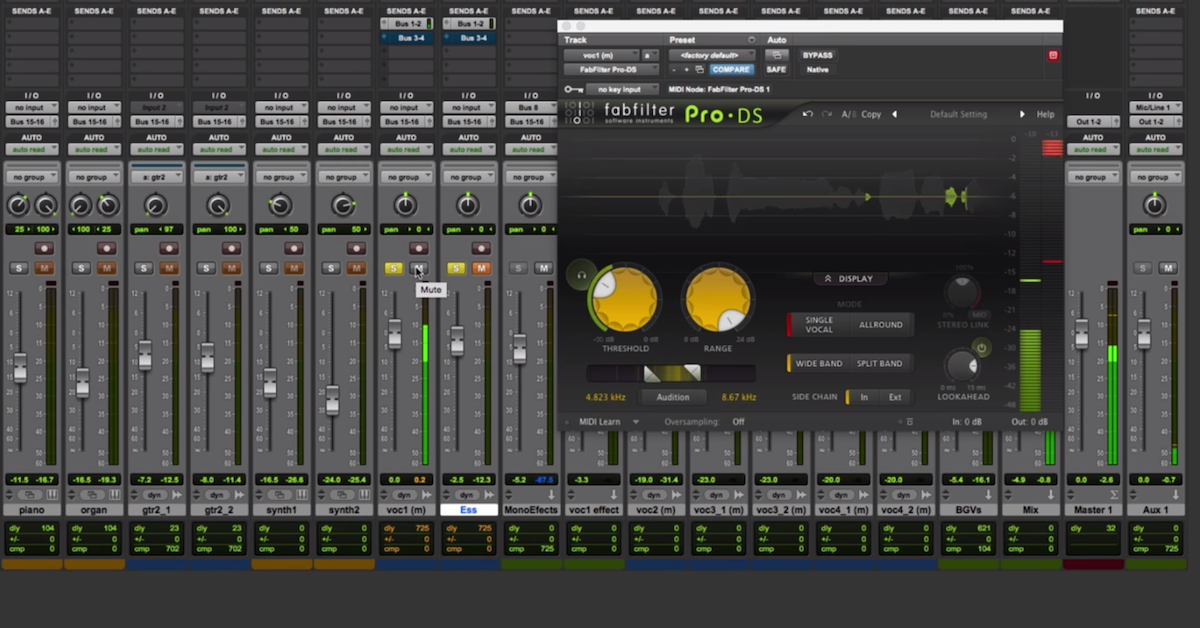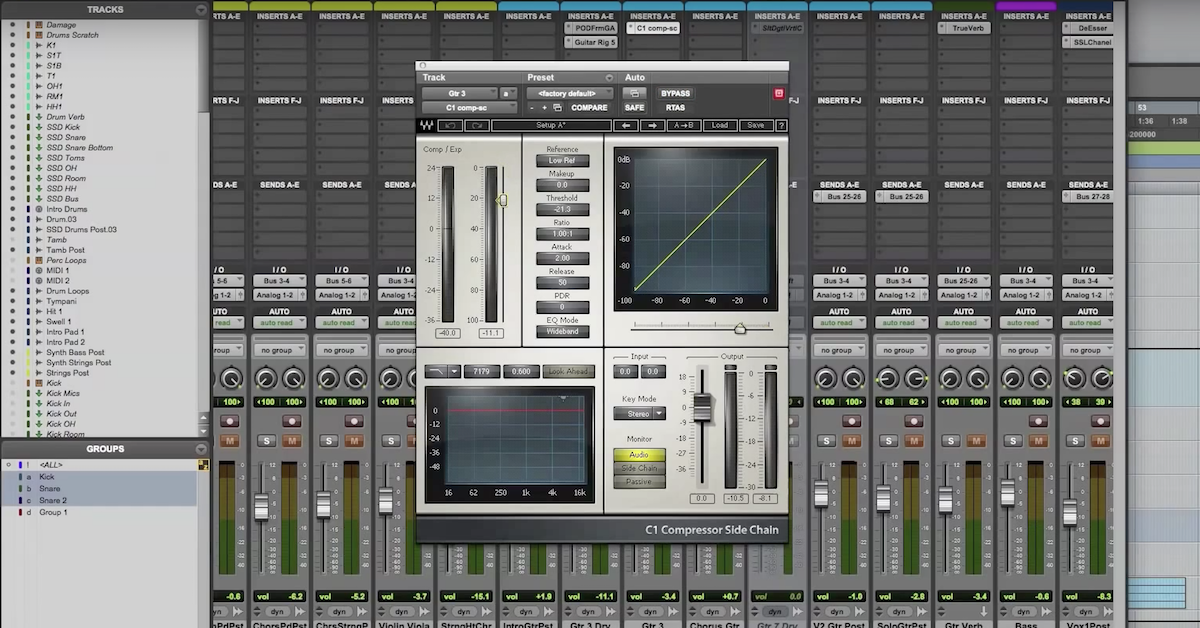5 Places to Use a De-Esser Besides Vocals
Article Content
Conventionally, a de-esser is used to attenuate the “ess” and “esh” parts of a vocal recording.
This is accomplished using a compressor that is triggered only by a sidechained, limited frequency range where the harsh sounds occur for a vocalist.
In some cases the de-esser is wide-band and compressing across the entire frequency spectrum, even though it is triggered only by a limited frequency range. In other cases the de-esser is split band, and only compressing the same range of frequencies as the sidechain.
This type of processing is an important part of mixing vocals. However, frequency-selective compression can also be applied to plenty of other parts of your mix.
Here are five other places where a de-esser can be applied in your mix.
1. De-Harsher on Electric Guitar
Electric guitar, especially heavily distorted electric guitar, can have some problematic harsh frequencies.
This could be a result of the amp, speaker/microphone pair, acoustic space or specific notes played on the guitar.
Sometimes an equalizer is sufficient to reduce the amplitude of this frequency range. Other times a subtractive equalizer can leave the entire performance sounding dull when there are only specific parts that sound harsh.
Instead, a de-esser can be used to perform attenuation only during the specific parts when the amplitude of harsh frequencies exceed a threshold.
Experiment with both wide-band and split-band forms of de-essing in this application.
2. Reduce String Noise on Bass Guitar
The bass guitar is typically an instrument that contributes to the foundation of a song. Therefore, it’s usually important as a mix engineer to keep the bass guitar at a fairly consistent level throughout. Sometimes this means applying significant dynamic range compression so the amplitude stays relatively constant throughout the performance.
When it comes to vocals, using compression to achieve consistent level can cause “ess” and “esh” to be unnaturally loud. When it comes to bass, using compression can cause fret and string noise to be unnaturally loud. For the most part, this noise occurs in high frequencies.
A split-band de-esser can be used to attenuate fret and string noise without affecting most of the tone of the bass.
3. Tame Cymbal Brightness
Another place where harsh, high frequencies can show up in your mix is with cymbals.
Whether it’s the crash cymbals in the overhead mics, or the hi-hit in the hi-hat mic, too many high frequencies can wash out an entire drum mix.
A de-esser can be used to tame cymbal brightness in a very musical way.
A de-esser can be set to respond quickly and compress the harshness that occurs at the initial transient of a cymbal hit.
As a dynamic processor, the de-esser will provide less attenuation to the sustain of the cymbal hit. Therefore, a de-esser will provide greater control and a different sound than a static equalizer.
Because there is usually a lot of instrument bleed in the drum mics, a split-band de-esser will sound much more natural than a wide-band de-esser. This way the de-esser primarily processes the harsh cymbal wash.
4. Remove Boxy Frequencies in a Kick Drum
Engineers normally think of using a de-esser to attenuate the amplitude of unwanted high frequencies. However, frequency-selective compression can be applied to any part of the frequency spectrum.
One place where a de-esser can be applied to attenuate the amplitude of low frequencies is on a kick drum.
For many styles of music, a common technique is to reduce the amplitude of frequencies between 200 – 500 Hz on a kick drum.
The typical signal processor for this task is a peaking/bell equalizer.
By using a de-esser instead, you can set up the processor to be sensitive to various amplitude levels of the drum.
For drum hits that have low amplitude, the de-esser can be set to allow for a more natural (unprocessed) drum sound. For drum hits that have high amplitude, the de-esser will scoop out more of this frequency range, providing a more hyped drum sound.
This technique can work well for both recorded acoustic drums and single-shot triggered drum samples.
5. Additive “Equalization” in Parallel
This final technique is, in some ways, a backwards method of using a de-esser. It is a creative method that takes advantage of monitoring options in many de-esser plug-ins.
Rather than using a de-esser to reduce the amplitude of unwanted frequencies, a de-esser could also be used to enhance desirable frequencies.
In many software de-essers, like the Sonnox Oxford SuprEsser, the output of the plug-in can be switched to monitor just the sidechain or processed signal.
In the case of the SuprEsser, the narrow frequency band can be monitored in isolation with and without compression. This can be helpful with conventional de-essing so you can temporarily focus on the frequency range for gain reduction. This also opens up other creative ways to make use of the plug-in.
Instead of using this monitoring feature to find the range of unwanted frequencies, you find a range of frequencies that you want to enhance. Then add compression from within the plug-in to make the level more consistent.
While using a separate track of the unprocessed signal, you can blend in to the processed signal on a parallel track, continuing to monitor the narrow frequency range at the output of the plug-in.





